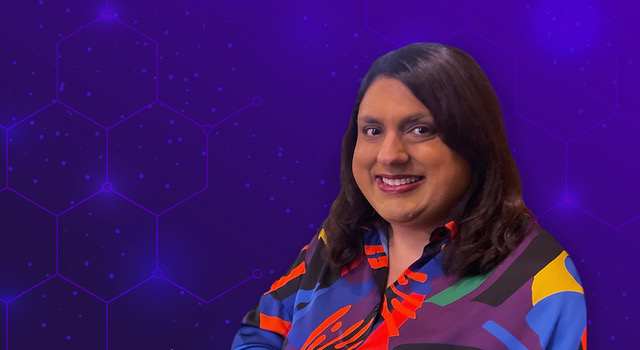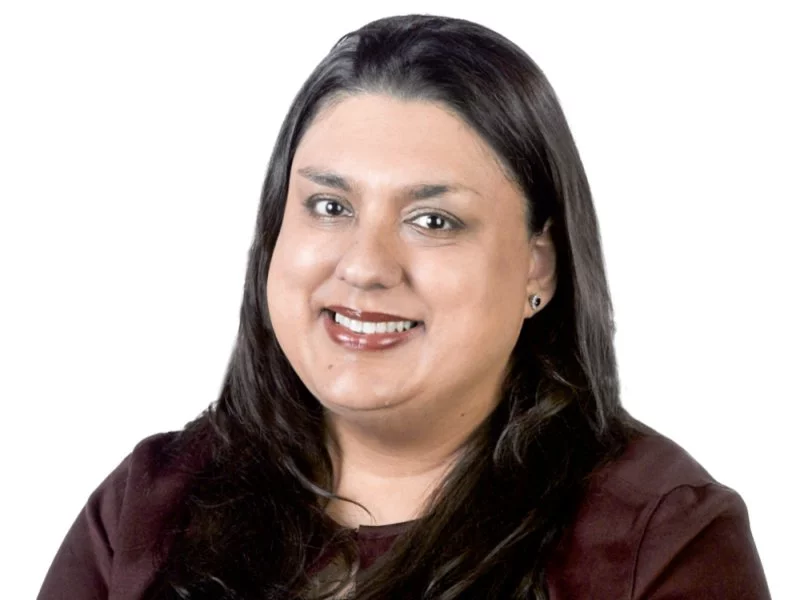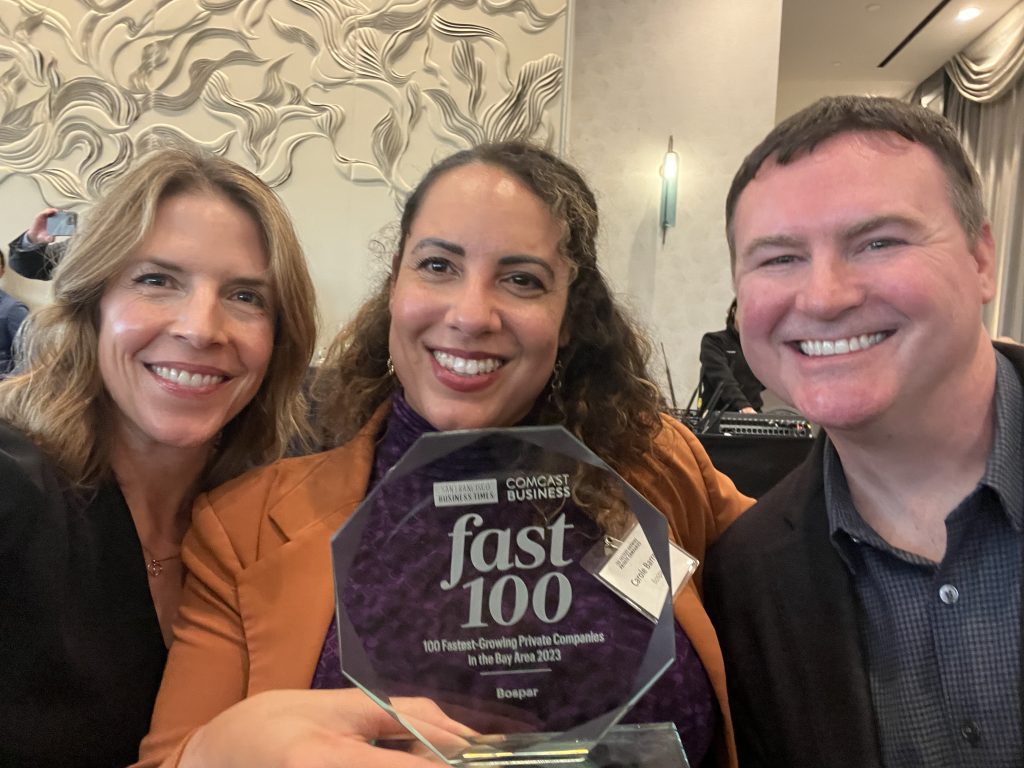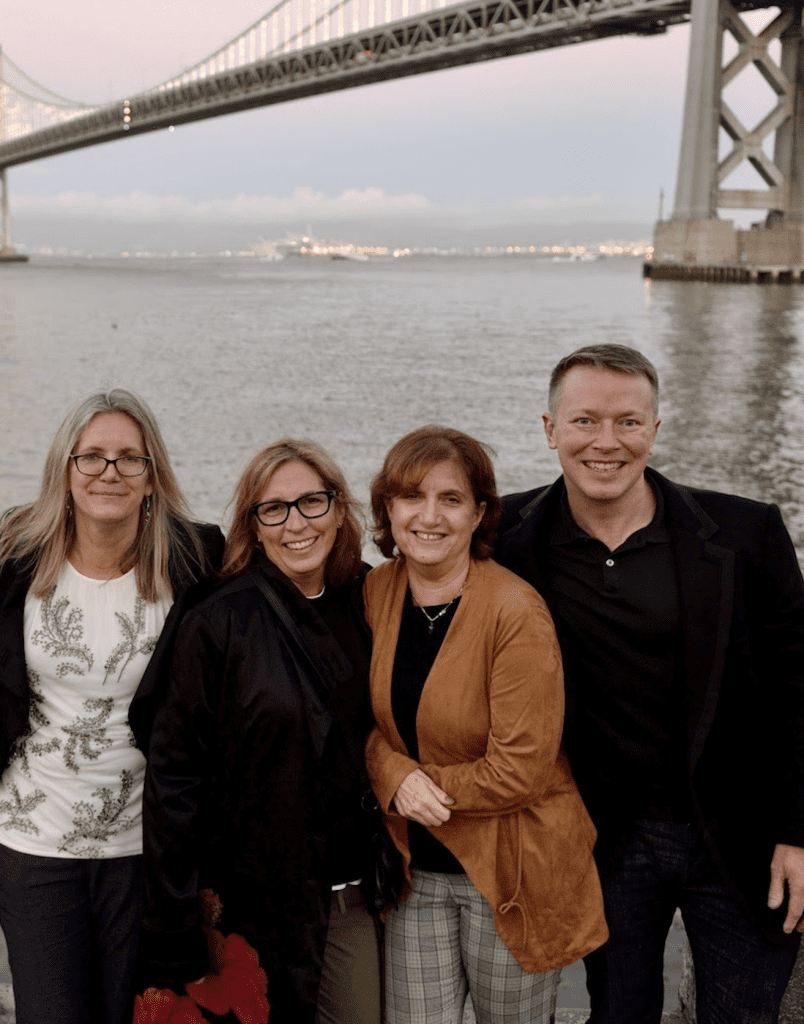What unique value do you add to Bospar and its clients?
As an immigrant to this country, I bring a unique set of values to the agency. From an early age, I credit my mother’s upbringing for instilling in me an understanding, respect, and empathy for people of various cultures and backgrounds. Growing up in a South Asian household I was taught to respect everyone around me, especially my elders. For instance, it was an unspoken expectation for the youngest person to offer an older person their seat if they walked into a room where additional or better seating wasn’t available. It is still a rule that I live by to this day. This sense of service that I was brought up with coupled with my respect for others and their cultural differences gives me a cutting edge in business. The values and approach that I learned at home – respect, patience, community, authenticity, etc. – have shaped who I am today, and they have become my go-to tools to successfully navigate the corporate world. I know it is something both my team and clients appreciate.
How did you get into public relations?
Believe it or not as a typical South Asian child I wanted to grow up to be a doctor. While in college, this led me to explore a part-time summer job at a local hospital in upstate New York. The role ended up being in the communications department. I enjoyed helping people in a way I had never expected I would. I loved it and at the end of the summer, I decided to enroll in a communications major at college.
Have you always worked at agencies since graduating?
Yes, I have always worked at PR agencies. I am a generalist who has worked with clients across technology, food, health and wellness, fashion, retail, beauty, and much more. It wasn’t easy to break into the agency world. Since enrolling in the public relations major at college, I took every opportunity I could to gain experience through various internships and projects. Back in the day, no one paid interns and there were no stipends. For one internship I did get college credit. Following graduation, I decided to look for jobs in New York City. At the time, I was a kid from a small town who knew nothing about the big city, and finding an apartment wasn’t as easy as I thought it would be. I commuted to work every day for 10 months by bus and spent 2.5 hours each way – 5 hours a day – and walked across Manhattan’s 42nd Street with the same excitement every single day. I made some great connections on the bus including an editor from Women’s Wear Daily, who is still a treasured friend.
Given that you have worked for different agencies, what mistakes do you see them making with clients?
The biggest mistake I have seen agencies make is overpromising and underdelivering, basically, promising prospects the world to pull them in. Obviously, you must entice prospects to work with you, but at the beginning of any successful long-term relationship, honesty is key. Clients come to us because we are the experts, and we should not shy away from openly educating them about what is feasible. Sure, everyone wants to be in The Wall Street Journal or The New York Times or on Good Morning America, but it doesn’t mean you will get there easily – especially if you don’t have the right assets – and the right PR partner should tell you that. While it isn’t impossible, the competition is high, and expectations need to be managed to ensure that the relationship is being set up for success right off the bat. We must remember that client education is a critical piece of our jobs. They don’t do this every day and they rely on us to be their advisors and guide them in both the right direction and to the best outcome.
You head DEI for Bospar. Does that benefit the agency, the clients, or both?
DEI benefits everyone at the agency including our clients and prospects. Having a diverse, inclusive team allows us to offer a unique approach across a variety of different categories. This is a personal passion of mine because when I first entered the PR industry, I rarely came across another person of color. I always felt different. I wasn’t like the typical sorority sisters and nor did I ever aspire to be. I had to put in a lot of effort to be where I am today so when I see others – no matter the skin color – who have the same work ethic and ambition, I am drawn to help them. Prior to Bospar, I can think of only one other job where I was part of a mixed staff. In my experience, mixed groups always result in the best creative ideas and brainstorms, which have the biggest positive impact on client campaigns. At Bospar, I am part of something incredible. Our team is the most diverse team that I have ever been a part of – our staff consists of everyone from Caucasians to African Americans to South Asians to Hispanics to members of the LGBTQIA+ community to groups of siblings and people of all ages. To me, diversity means so much more than what is visible to the naked eye.
A lot of companies talk about DEI. It’s a principle, a value, but not really reflected in the way they operate. Can you speak to that?
For a lot of companies, DEI is a box to check off. It has become a trend like, “Let’s get recognized for doing this because it seems to be the right thing to do and is expected from us.” Every company has a DEI page on their website because it has become a mandatory part for business. Sadly, most people don’t understand what they are doing. Those who are pushing DEI initiatives forward very openly tend to be doing it for external praise and recognition. We hear a lot about “learning” and “education.” What we need is action and implementation. DEI needs to be streamlined within the planned activities of a company to a point where it doesn’t feel like a separate task, but rather falls within the uniformed activities of normal business flow.
How has PR evolved since you started?
I am happy to say that there is a lot more diversity in the industry now. You see more people of color as well as members of the LGBTQIA+ community. Remote opportunities have become more common since the pandemic, although Bospar has been a remote agency since our founding in 2015. Working remotely provides the ability to interact with people all over the world. When I worked in a traditional office, I would often join team members for a client call in a large conference room, equipped with a Polycom conferencing system. Working from home and over Zoom video has really allowed for a stronger connection with clients and the ability to connect with team members no matter where they are based. This is similar with journalists too. In the past, we would set up dial-ins for calls and connect journalists with clients by calling them, but now journalists will also often join Zoom video meetings with us. Even if we are not in the same room, video helps us make a stronger connection than traditional audio.
How do you see PR changing in the future?
We are already seeing it change so much. We are constantly seeing staff downsizing and publications shuttering. Journalists who are still on the job are spread thinner than ever. They are stressed to produce impactful stories that generate clicks. Contributed content is now more popular than ever. As PR people, it gives us a great opportunity to position our clients as thought leaders in their respective areas of expertise and help our media friends generate valuable content for their readers. The more that we can do to streamline the overall process for reporters – share shorter, more impactful pitches and provide to-the-point, stronger executive commentary – the better the chances of our clients being included in their stories.
What are the traits of a successful client relationship on both sides?
Open communication is critical. You must remember that it is a two-way street. Just as in one’s personal life, people tend to shy away in their professional life from addressing issues head-on. Being direct, yet diplomatic, is key to maintaining a successful relationship. Additionally, having an open dialogue can help to create stronger interpersonal relationships, which only helps to build a deeper comfort level with your client. In my opinion, the best relationships are those where you get to know the person a bit more than just who they are on the job. When you get to know the whole person, you develop a mutual respect and understanding for one another which makes having difficult conversations a bit more pleasant.
Have you ever experienced clients that frustrate their own PR efforts?
I have worked with clients who overthink things and take too much time to make simple decisions – like agreeing to do an interview – or think that they can back down from a major booking last minute because it isn’t a big deal or a top priority on their list. The truth is that such actions never reflect well on these individuals, their companies, or their PR partners. They must realize that everyone wants top-tier media and journalists have their pick from the crowd. It only takes one time to break someone’s trust or damage a relationship that can easily get you to be blacklisted. Let’s just say if Bloomberg calls you for a 4:00 a.m. arrival you better show up ready to go with a big smile because there is a line of people behind you that are willing to do just that and more.
What are the best types of client relationships to have?
The best relationships are ones that are built on trust and mutual respect. Where the client understands that you are the PR professional and expert who is working for them to get the best results possible. And you as the PR expert are one step ahead of the client – revisiting agreed-upon KPIs on a regular basis to make sure things are moving in the right direction or re-strategize to ensure that things are back on track. You should always put yourself in your client’s shoes and think about what you would need if you were them and provide that before they even think to ask for it. PR partners need to be proactive to be indispensable.




